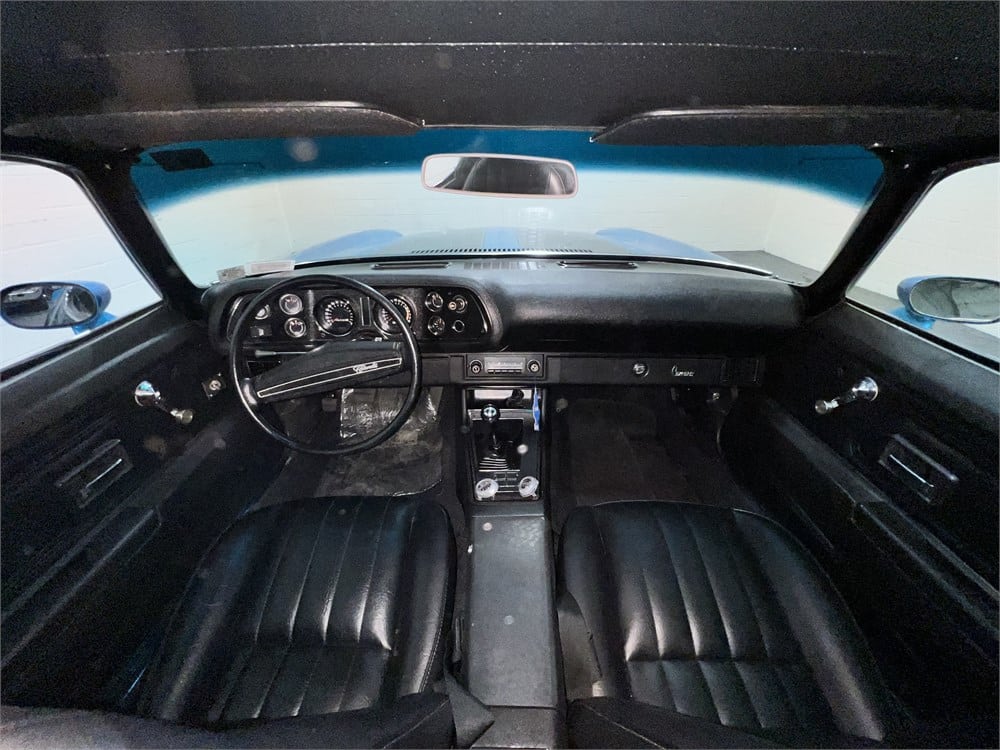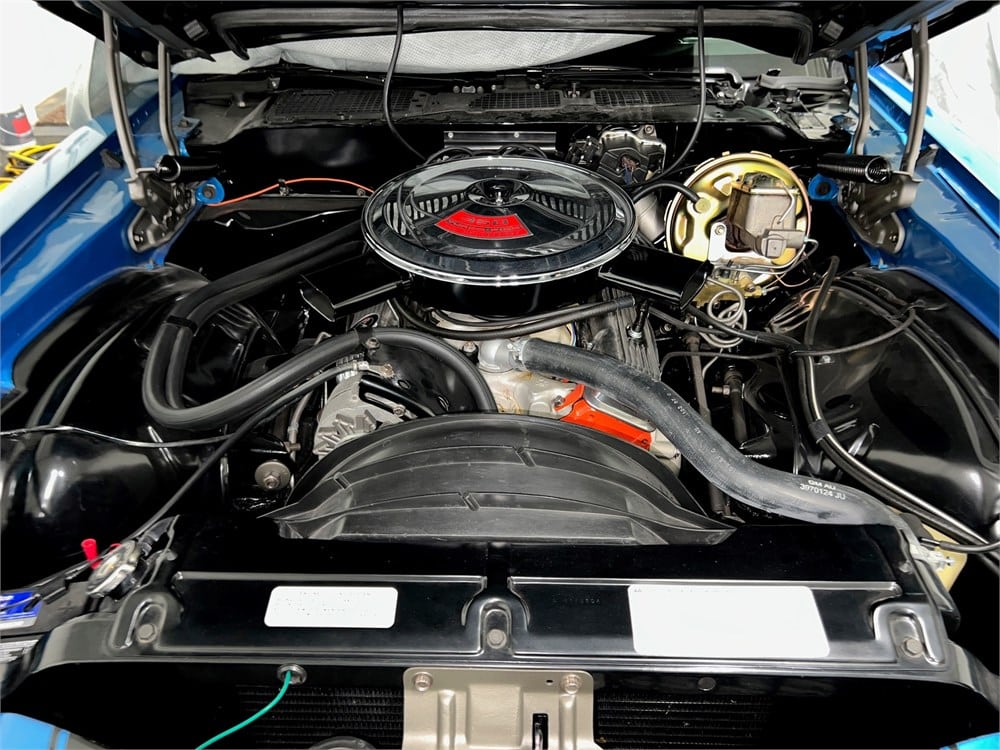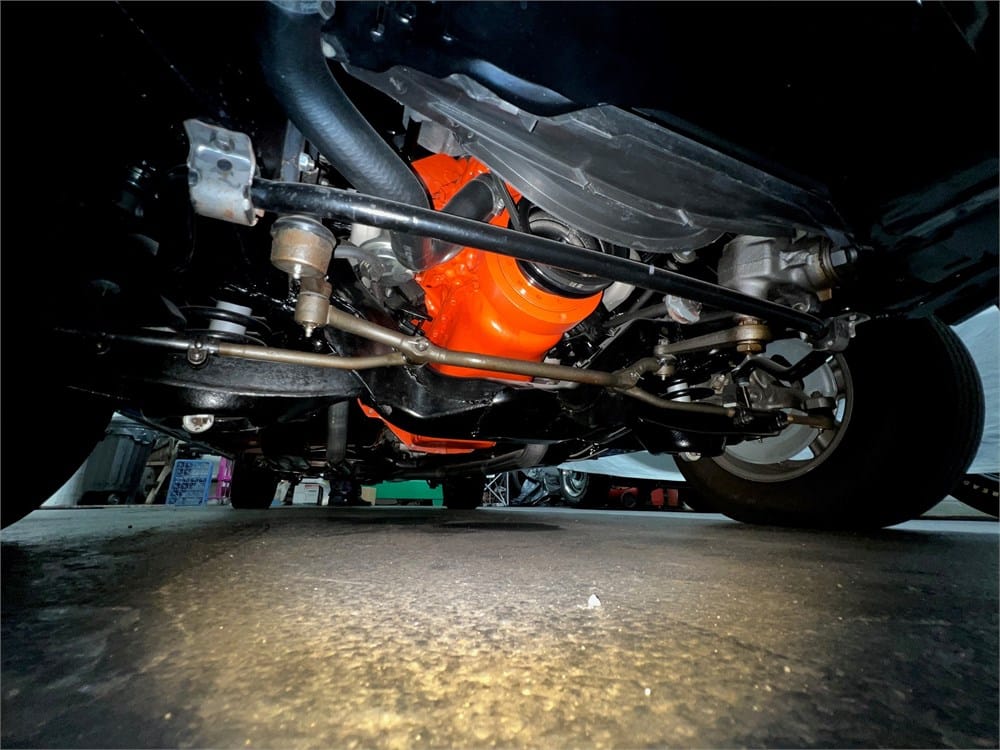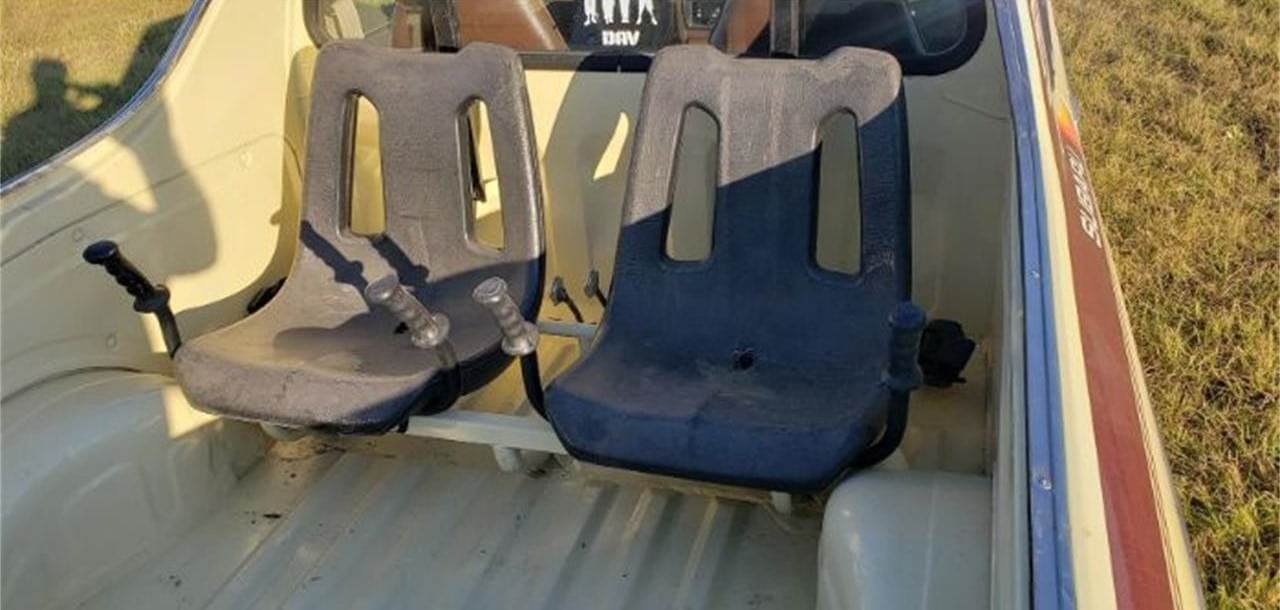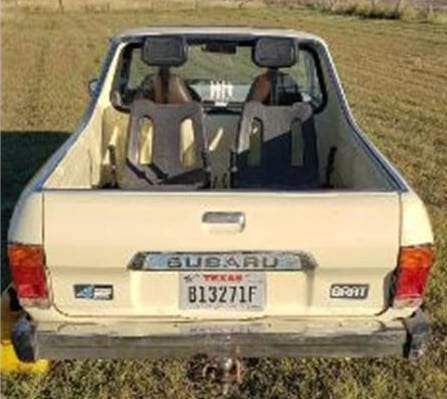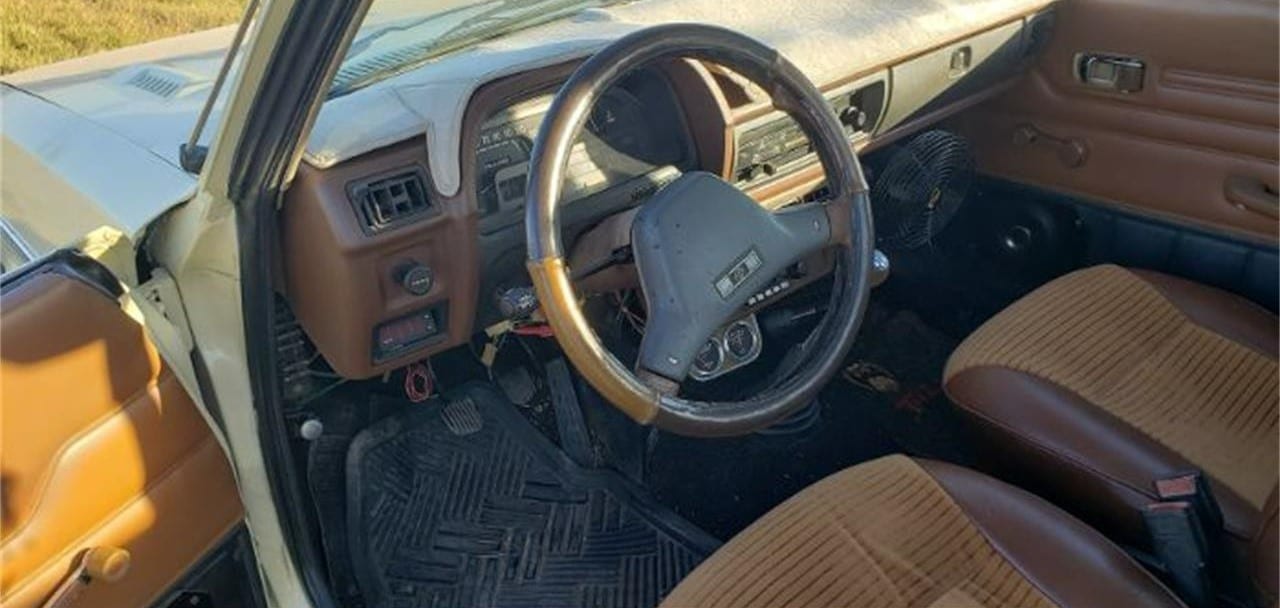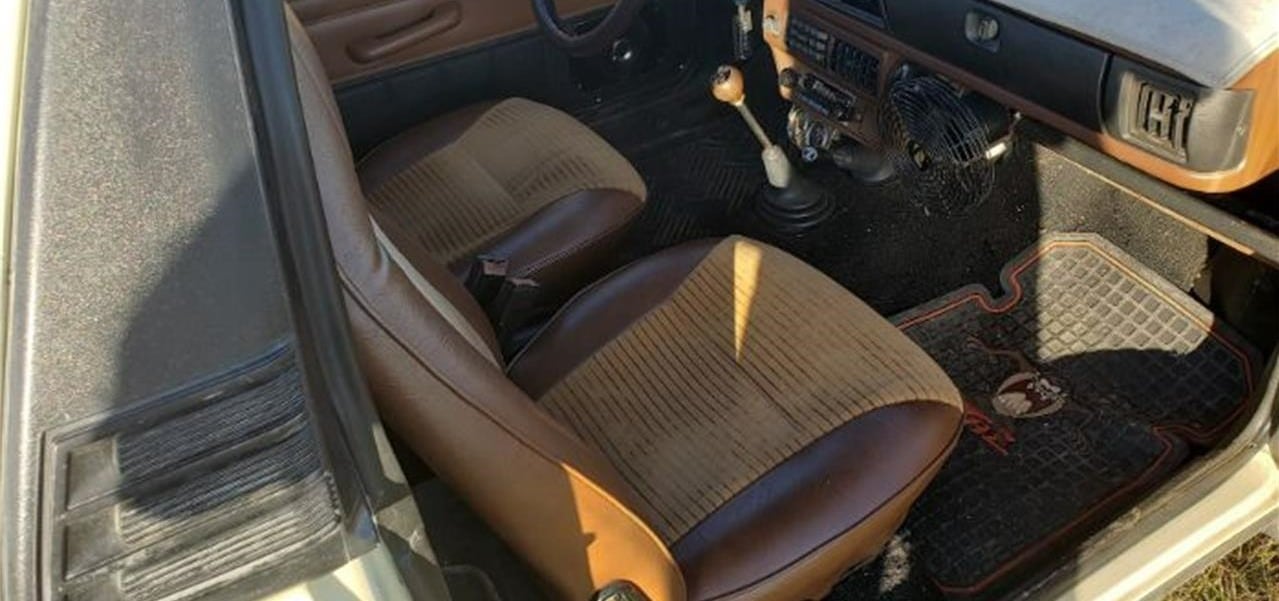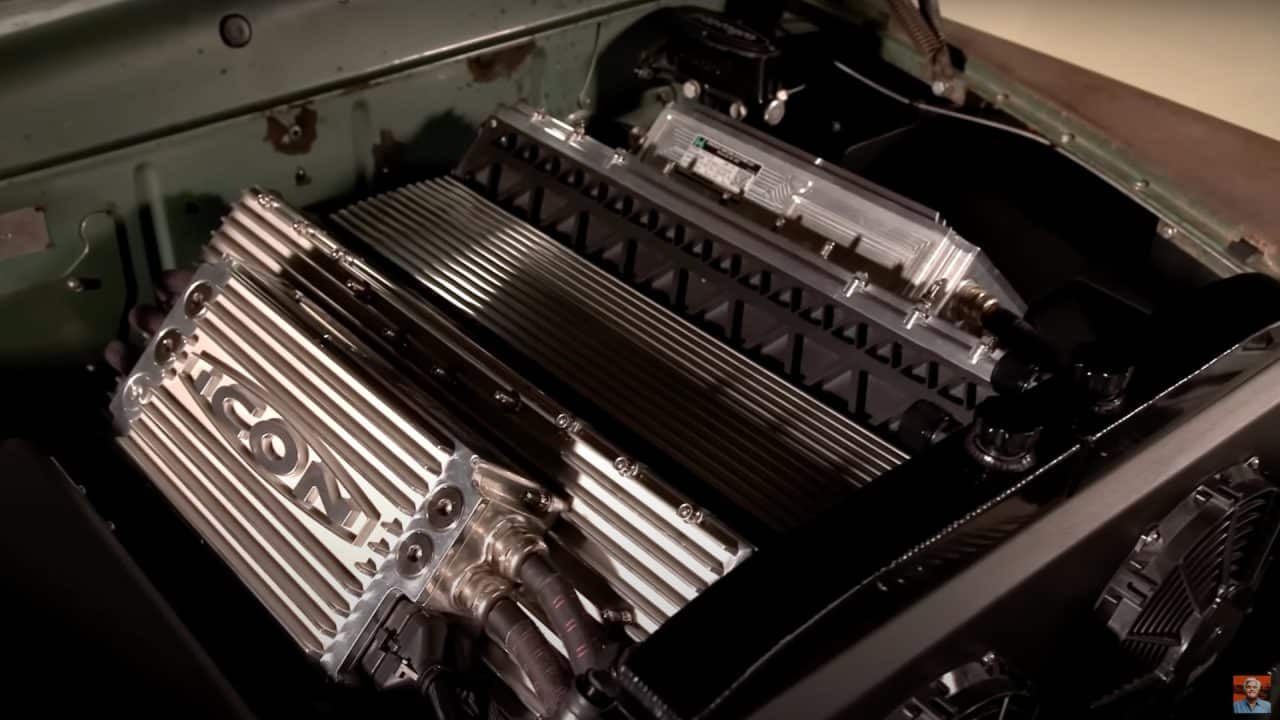Ancient Roman mythology states that the deity Mercury was a wing-footed messenger who had a knack for gracing mortals with financial gain. But there was so much more to Mercury than fiscal prowess and communication. This Roman god was also known for eloquence, guiding travelers, establishing boundaries, providing luck, and — truth be told — a little trickery. Kind of fitting, then, that Ford Motor Company’s mid-market division was bequeathed with both the deity’s name and likeness when organized during the late Thirties. It was an upscale traveler as comfortable as a messenger in flight that alluded to financial success without blatantly flaunting it. It was only later that the trickery trait emerged.
![Color image of a 1964 Mercury Comet Caliente modified tribute parked in a front 3/4 position.]()
![Color image of a 1964 Mercury Comet Caliente modified tribute parked in a front 3/4 position in front of trees.]()
![Color image of a 1964 Mercury Comet Caliente modified tribute parked in front of a building, head-on position.]()
![Color image of a 1964 Mercury Comet Caliente modified tribute parked in a near profile position in front of a silo.]()
Dearborn’s mid-level division, named for the wing-footed messenger, was intended as a cut above Ford-branded vehicles, and the Mercury line offered a broad variety of options on many of its models during the 1960s that could increase both comfort and performance, often discreetly. Mercury’s more exclusive mid-market muscle cars were also produced in fewer numbers, yet that didn’t mean there was less demand among gearheads, then or now.
“Back when I was about seven or eight years old, my dad, Jeff, bought a used 1964 Mercury Comet Caliente. It was a 289-powered car with an automatic transmission, and the power — what I knew of it then — and the looks were what got me hooked on the Mercury brand,” Chambersburg, Pennsylvania’s Curtis Thomas explains. “At about the same time, I took a real interest in the A/ and B/FX cars that the big names were racing back in the day. I couldn’t help but fall in love with Mercury.”
A mechanic and auto body restorer by trade today, Curtis kept his Mercury ownership dreams alive — twice. “I bought my first Mercury when I was 15: a 1964 Cyclone with a 210-horse engine under the hood, with an automatic on the column. It had black bucket seats and a Polar White paint job. After I fixed it up, I drove it around for a while and eventually sold it,” Curtis states with a hint of longing. He adds, “I had been wanting another Mercury since. Something that could fulfill a vision I had of a B/FX racer. All you see today are A/FX style cars; you don’t see much B/FX stuff at shows.” The trick to meeting a second ownership goal, and turning his vision into reality, was to build up a fiscal nest egg, so as to be ready when the right subject came along. That effort was aided by another of Ford’s creations, the Fox-body Mustang. During off hours, Curtis would put his mechanical expertise into further practice by buying a pony in need, fixing it up, and then flipping it for profit. He repeated this nearly a half dozen times, until one day…
![Color closeup of the engine bay in a 1964 Mercury Comet Caliente modified tribute, 260 V-8 overbored to a 302.]()
![Color closeup of the carburetor under the air cleaner in the engine bay of a 1964 Mercury Comet Caliente modified tribute.]()
![Color closeup of the hood and hood scoop on a 1964 Mercury Comet Caliente modified tribute.]()
![Color closeup of the hood and hood scoop on a 1964 Mercury Comet Caliente modified tribute.]()
![Color closeup of the Mercury Roman god logo on the fender of a 1964 Mercury Comet Caliente modified tribute.]()
![Color closeup of Crane Cams stenciling on the front fender of a 1964 Mercury Comet Caliente modified tribute.]()
“Two years ago, I was sitting at home scrolling through social media when I spotted this 1964 Mercury Comet Caliente two-door hardtop for sale in Harrisburg. That’s close enough to me, so I drove up there to check it out. The car had been painted Yellow Mist at the factory and was sold new in Harrisburg, but by the time the seller got his hands on it, the body was weather-worn with patina and looked green because of all the muck on it — it was very dirty. Originally, there was a 260-cu.in. V-8 under the hood, but in its place was a warmed-up 302. And it was an automatic column-shift car, but this guy had gaffed a Hurst Quarter-Stick into the cabin. The decklid had been spray-bombed with cheap primer for some reason, and the wheels were wearing Cyclone hub caps.”
Curtis quickly saw the potential, even though the seller had lost interest. “While I was looking the car over, it came out that the seller — the second owner — had bought it thinking he was going to turn it into a lowrider. The first thing he did was cut the floor up for the Quarter-Stick, but then he changed his mind and wanted a ’62 Impala instead.” This certainly worked in Curtis’s favor, and he didn’t hesitate.
“I’m really good at seeing through a mess and visualizing what something will look like before I even put a wrench to it. It had taken years for me to find one that had almost zero rust, so yeah, it was dirty, but there was almost no rot,” Curtis reports.
![Color closeup of the front passenger's side corner of a 1964 Mercury Comet Caliente modified tribute.]()
![Color closeup of the head lamps, driver side, on a 1964 Mercury Comet Caliente modified tribute.]()
![Color closeup of the tail lamps, tail panel and trunk script "Comet" on a 1964 Mercury Comet Caliente modified tribute.]()
![Color closeup of the rear quarter window on a 1964 Mercury Comet Caliente modified tribute. Stickers and various decals.]()
![Color closeup of the trunk lock and emblem on a 1964 Mercury Comet Caliente modified tribute.]()
![Color closeup of the rear passenger side quarter and wheel/tire on a 1964 Mercury Comet Caliente modified tribute.]()
![Color closeup of the passenger side front wheel/tire and fender on a 1964 Mercury Comet Caliente modified tribute.]()
![Color closeup of a performance decal on the back glass of a 1964 Mercury Comet Caliente modified tribute.]()
Finding the Comet for sale could be chalked up to a combination of patience and kismet. Years earlier, while Curtis was detailing cars at Conners Auto Sales fresh out of school, a Chevy pickup arrived wearing a Curtis Ford Mercury front plate (Pennsylvania issues only rear license plates) — a dealership that had been in Harrisburg. Curtis kept the plate, as it bore his name, and hung it in his garage for posterity. Years later, with the newly acquired Caliente hardtop stowed in the same garage, a simple vision morphed into something far more meaningful, as Curtis explains.
“My dad and I were brainstorming one Saturday afternoon and told him what I’d like the car to look like. He said, ‘Why don’t you put Curtis Mercury on the side because it’s your name, it’s a Mercury, and you have that old license plate. Both came from Harrisburg, so if you put it all on the car, it all ties together.’ That was it. After finding a profile of a white ’64 Comet online, I printed out an enlarged image and sketched out how I wanted the exterior to look.”
Curtis launched into his project by subjecting the Comet’s exterior to a pressure washing, followed by a thorough scrubbing of the interior, the latter of which was enough to eliminate the need to source new upholstery. Curtis was also able to analyze the condition of the Mercury’s brightwork — only a single gauge bezel within the cabin needed to be restored. Focus then shifted to the mechanical design.
![Color image of the interior, dash and more from the passenger side of a 1964 Mercury Comet Caliente modified tribute.]()
![Color closeup of the steering wheel, dash and dash cluster in a 1964 Mercury Comet Caliente modified tribute.]()
![Color closeup of the switches, steering wheel knob and cluster in a 1964 Mercury Comet Caliente modified tribute.]()
“The car ran okay, but I really wanted to make sure it would last. Fortunately, the seller knew all the details, so it was a matter of simple double-check and some visual adjustments,” said Curtis, going on to explain, “The block was a 302 with a .040-inch overbore, so it worked out to 308 cubic inches of displacement. He used Edelbrock aluminum heads with 1.6:1 roller rockers, along with a cam profile that was close to the hi-po units Ford used. He also had an aluminum Edelbrock intake installed with a 600-cfm Holley.
Curtis wanted the Comet engine to have the right look as well. “I swapped the valve covers for real-deal 289 “hi-po” units, and put them on with spacers so that there would be room for the aftermarket rockers. I also bought a reproduction hi-po air cleaner assembly. The only thing someone did wrong was paint the engine blue; they were black in ’64, but I can address that later,” Curtis says.
“What bugged me was the condition of the floor after the transmission swap. My eventual plan involved the installation of a four-speed, but to keep the budget down at the time, I opted to keep the Hurst Quarter-Stick automatic shifter in place. The transmission has a 2,600-rpm stall converter and a shift kit, and I’m okay with that right now.”
Even though he was sticking with the automatic, Curtis still kept an eye toward the future. “The other thing I needed to do was swap out the steering column — that still had all the automatic stuff hanging out of it — with a column from a floor-shifted ’65 Mustang. Then I cleaned up all the rough metal cuts in the transmission hump in a dimension that will allow for the four-speed. It’s one less thing that needs to be done later.”
![Color closeup of the glovebox and dash area in a 1964 Mercury Comet Caliente modified tribute.]()
![Color closeup of the rear seat and racing helmet in a 1964 Mercury Comet Caliente modified tribute.]()
![Color closeup of the front bench seat in a 1964 Mercury Comet Caliente modified tribute.]()
But there were other things for Curtis to attend to immediately. “Something I was able to change right away was the rear axle gearing. The car was fitted with ‘airplane gears’ at the factory and the seller had purchased a set of 4.11s for the 8-inch differential. I wanted to make sure this Comet had not only the right visual attitude but the right track attitude. So, I put the 4.11s in. Then I cut the springs in the back to get the tail end to drop a bit for that classic Sixties drag-strip stance. Up front I installed 90/10 drag shocks so that I’d get a little extra lift during a launch. For traction, I swapped the stock rear wheels for a pair of 15 x 6-inch steelies from Coker, along with M&H drag slicks. At the other end I installed American Torq Thrusts with Firestone ‘pie-crust’ tires.”
All the purpose-built attitude would be for naught were it not for a matching exterior. With the “patina’d” exterior providing a perfect canvas, Curtis reached out to his friend, Glen Shaw, a.k.a. “Pooch,” to manage period lettering weathered to match the paint. Simultaneously, Curtis color-matched the body, enabling him to paint not only the gray primered trunk lid, but also a recently purchased teardrop fiberglass hood; the original was safely stowed. A final touch on those two panels was a layer of satin clearcoat.
Finally, there were but a few interior tweaks that needed to be addressed. The first was the installation of a period-correct Moon tachometer and a Stewart Warner oil pressure gauge, the latter a true representation of what Ford installed in its high-performance cars during the era when new. Second was a period racing helmet that was found and, eventually, emblazoned with “Junior” — Curtis’s nickname.
“We finished the Mercury a month before the Ford Nationals at Carlisle. I didn’t trailer it there, I drove it. She’s pretty snappy on the street. So far, Carlisle is the furthest I’ve driven it. That drive up Route 11, rather than the interstate, was a hike for her with those 4.11s. At 50 mph I was already tachin’ 3,000 rpm!” Curtis relates with no regrets. “It’s such a fun ride. It handles better than I thought it would for a tribute racer. If you don’t mind taking your time getting somewhere, it makes for a great day behind the wheel.”
Owner’s View
![Color image of the owners posing in front of their 1964 Mercury Comet Caliente modified tribute.]()
I haven’t raced the Mercury yet. I would need to put seatbelts in it since it never had any when it was sold new, though period racing belts would be ideal. As built, I think it should run in the low 14s or high 13s in the quarter-mile. The goal, however, is to take it to the next level for that A/FX vibe. That means getting a Ford FE 427 with dual quads feeding it. But right now, I love driving it. People wave and come up beside to say they haven’t seen one in years. My plan is to enjoy it for two years, then get to work putting the FE in, and then enjoy it on the track.—Curtis Thomas
SPECIFICATIONS
ENGINE
Block type: Ford “small-block” 302-cu.in. V-8, cast-iron block, Edelbrock 5.0, cast-aluminum cylinder heads, 60-cc combustion chambers
Displacement: 308 cubic inches
Bore x stroke: 4.04 x 3.00 inches
Compression ratio: 10.0:1
Horsepower @ rpm: Unknown
Torque @ rpm: Unknown
Valvetrain: Manley stainless 2.05/1.60-in, intake/exhaust; Speed Pro hydraulic lifters
Camshaft: Speed Pro CS-1020R; hydraulic
Induction: Edelbrock Performer 289 cast-aluminum intake, single Holley 650-cfm four-barrel carburetor; Ford OE mechanical pump
Lubrication system: Ford gear-type pump
Ignition system: Ford breaker-point
Exhaust system: Hooker headers; custom 2.50-in dual exhaust; dual Flowmaster mufflers
Original engine: Ford 260-cu.in. V-8 w/ 2-bbl. carburetor
TRANSMISSION
Type: Ford C-4 automatic; Hurst “Quarter-Stick” shifter
Ratios: 1st/2.46:1 … 2nd/1.46:1 … 3rd/1.00:1 … Reverse/2.20:1
DIFFERENTIAL
Type: Ford 8-inch, Traction-Lok limited-slip
Ratio: 4.11:1
STEERING
Type: Ford recirculating ball, power-assisted
Ratio: 16:1
BRAKES
Type: Ford hydraulic, unassisted Front/Rear: 10 x 2.50-inch drums
SUSPENSION
Front: Ford independent, unequal length control arms; coil springs; 90/10 shock absorbers, anti-sway bar
Rear: Ford solid axle; altered semi-elliptic leaf springs; telescoping shock absorbers
WHEELS & TIRES
Wheels: American Racing Torq Thrust (front); OE-style stamped steel (rear)
Front: 15 x 4.0 inches Rear: 15 x 6.0 inches
Tires: Firestone (front); M&H (rear)
Front: 5.60-15 bias-ply Rear: P235/60R15 radial slicks
PERFORMANCE
1/4-mile ET, factory-stock: 19.0 @ 75 mph* (Motor Trend, 8/63)
1/4-mile ET, current best: N/A
Current 60-foot time: N/A
* Tested vehicle was 1963 Comet S-22 fitted with a 164-hp 260-cu.in. V-8, four-speed manual transmission and a 3.50:1 final drive ratio; 0-60 mph time was 11.50 seconds.
![Color image of a 1964 Mercury Comet Caliente modified tribute parked in a rear 3/4 position in front of a building.]()
Photo by David Conwill



